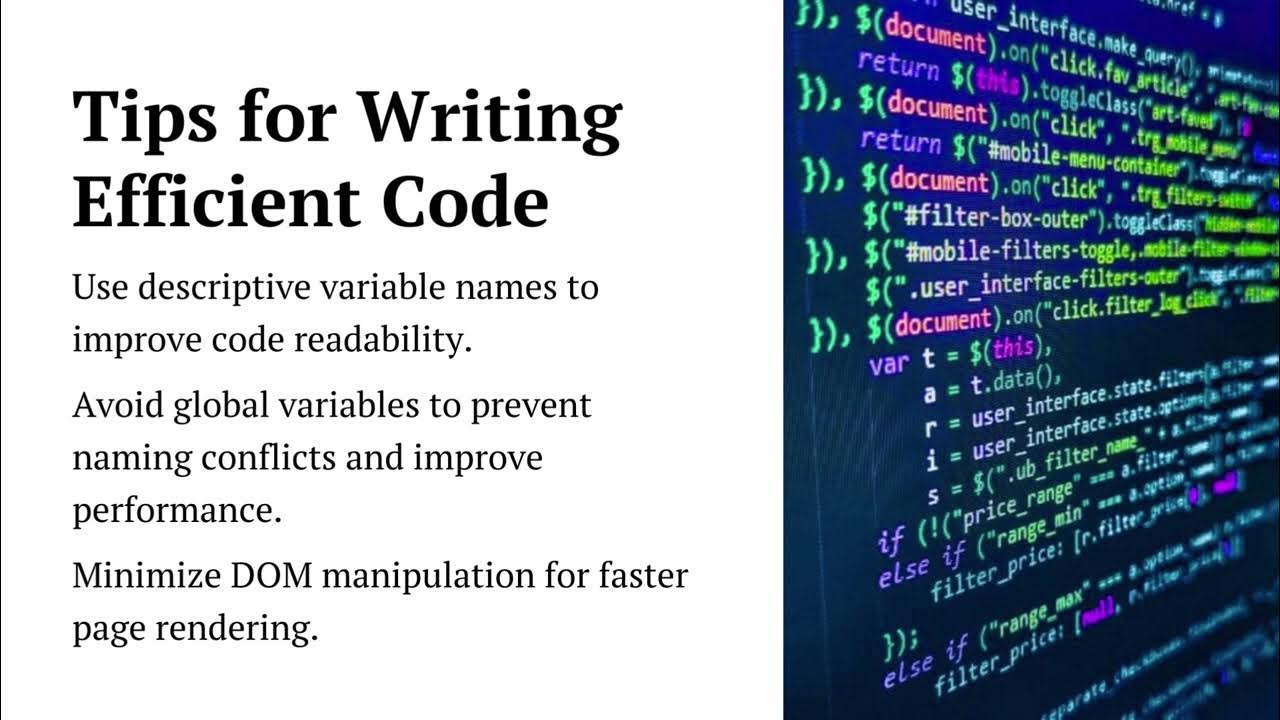
Introduction
Effective code documentation is a critical aspect of software development, providing insights into the functionality, design decisions, and usage of code. In this article, we’ll explore essential tips for streamlining the process of code documentation, ensuring clarity and understanding for both current and future developers.
Understand Your Audience
Before diving into documentation, it’s crucial to understand your audience. Consider who will be reading the documentation—whether it’s fellow developers, stakeholders, or even your future self. Tailoring the documentation to the audience helps in providing the right level of detail and context.
Use Consistent Formatting and Style
Consistency in formatting and style enhances the readability of your documentation. Establish and adhere to a consistent format for code snippets, comments, and explanations. This uniformity ensures that readers can quickly grasp the structure and meaning of the documented code.
Provide Inline Comments
Inline comments play a vital role in code documentation. They offer insights into the purpose of specific lines of code, potential caveats, or explanations of complex algorithms. Be concise and focused in your comments, addressing the why rather than the how, which can often be inferred from the code itself.
Document Functionality and Usage
Clearly document the functionality of each module, class, or function. Describe the intended purpose, expected inputs, and the resulting output. Additionally, provide examples of how to use the code in real-world scenarios. This proactive approach can significantly reduce the learning curve for developers using your code.
Update Documentation with Code Changes
Documentation should evolve alongside code changes. Whenever you modify or add functionality, update the corresponding documentation. This ensures that the documentation remains accurate and aligned with the current state of the codebase. Regularly reviewing and updating documentation is a good practice.
Use Documentation Generators
Documentation generators, such as Javadoc for Java or Sphinx for Python, can automate the process of creating documentation. These tools extract comments from your code and generate formatted documentation. Leveraging such generators not only saves time but also enforces consistency in documentation style.
Include Diagrams and Visuals
Visual aids, such as flowcharts, diagrams, and graphs, can significantly enhance the understanding of complex systems. When appropriate, include visuals to illustrate the architecture, data flows, or relationships within your code. Visual elements can provide a quick overview and facilitate comprehension.
Write Self-Explanatory Code
While documentation is crucial, aim for code that is as self-explanatory as possible. Use meaningful variable and function names, follow a logical structure, and avoid unnecessary complexity. Well-written code reduces the need for extensive documentation by making the purpose and functionality evident.
Encourage Collaborative Documentation
Documentation should not be a solo endeavor. Encourage collaboration by involving team members in the documentation process. Conduct code reviews with a focus on documentation, allowing multiple perspectives to contribute to clarity and completeness.
Tips for Efficient Code Documentation: Explore more
To delve deeper into the art of efficient code documentation, check out our comprehensive guide. Learn additional strategies and best practices to elevate your documentation skills and contribute to a more streamlined development process.
Conclusion
Efficient code documentation is a skill that pays dividends throughout the software development lifecycle. By understanding your audience, maintaining consistency, and leveraging tools, you can create documentation that not only explains the code but also enhances the overall collaboration and maintainability of your projects.



![Average Renovation Costs in [Your Location] Average Renovation Costs in [Your Location]](https://images.unsplash.com/photo-1517103278237-421a1cb020fa?fm=jpg&q=60&w=3000&ixlib=rb-4.0.3&ixid=M3wxMjA3fDB8MHxzZWFyY2h8M3x8aG93JTIwbXVjaCUyMHJlbm92YXRpb24lMjBjb3N0fGVufDB8MHwwfHx8Mg%3D%3D)






